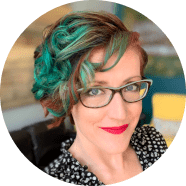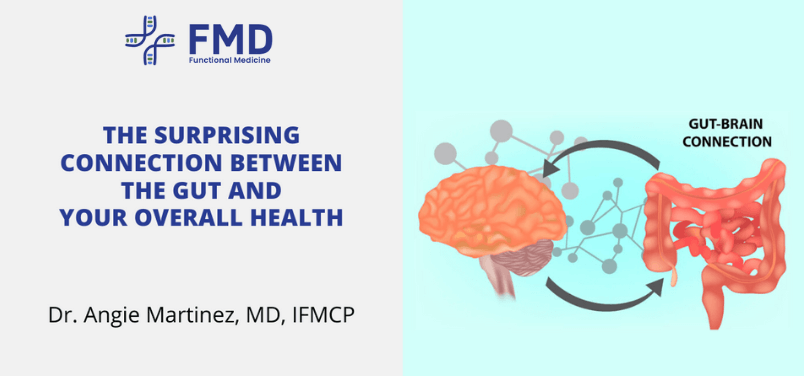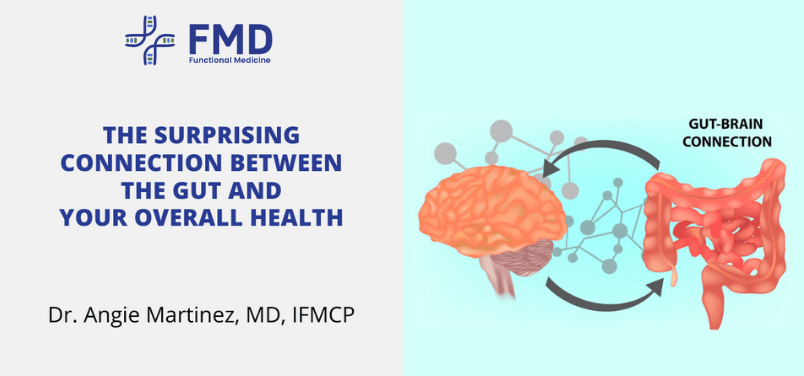 |
Dr. Lara Salyer, DO, IFMCP Functional Medicine Doctor Burnout Expert |
Interview with Dr. Lara Salyer, DO, IFMCP
The author of Right Brain Rescue
How to Recover from Burnout, The Functional Medicine Approach
Diagnosis | Burnout vs. stress | Treatment | Lifestyle | Flow state | Reflection | Social support | Diet & supplements
Burnout has become a real problem that affects many people from all walks of life, with the pandemic making this problem clearer and more relevant. In this interview, we spoke with Dr. Lara Salyer, a functional medicine doctor who specializes in burnout. After recovering from burnout herself, Dr. Lara developed a holistic functional medicine approach to burnout to help others address this serious problem plaguing many of us.
What is your personal experience with burnout?
I grew up in a small rural Midwestern town. Early on, I developed a fascination with the human body because I was raised around a funeral home. I loved my little town and I loved science. I knew from an early age that I wanted to be a rural family practitioner, so off I went to medical school.
I was blessed to have the career of my dreams. But, after a few years I started realizing that the landscape of medicine was changing. I felt more like a factory worker than a doctor. My visits with patients were shorter and shorter. I couldn’t teach my patients about their health in the way I had envisioned. To me, teaching is the root of the medical profession.
Over the years, I blamed a lot of external factors for how I was feeling. I thought it was the electronic medical charts or hospital policies or that I had made the wrong career choice. I was ready to breakup with medicine. I thought I hated it.
Luckily, I discovered the concept of burnout and realized that I didn’t actually hate medicine. I just hated how I was practicing it. So, I developed my own private practice in functional medicine to help others free themselves from the burnout that is holding them back from living their best lives.
What is Burnout?
You might be surprised to know that burnout has its own ICD-10 diagnosis code, meaning it is considered a true illness. It is characterized by three main symptoms:
- Depersonalization
- Emotional exhaustion
- Low perceived personal achievement
The best way to explain it: like you have taken your foot off the gas of life, you aren’t even engaging anymore. You are just running in neutral.
There is also a sense of feeling like what you do doesn’t really contribute to anything. You could be clocking in and out of a job every day, but you feel like you are not making a difference.
Anyone can become burnt out. It can happen because of a job, parenting, relationships or just life in general. Although it can occur in any profession, it is estimated that 50% of physicians are burnt out due to work related concerns and how medicine is structured these days.
Burnout can happen in any situation where things become automatic. The loss of novelty, curiosity, and feeling like your opinion or uniqueness do not count can all lead to burnout. This can happen in any aspect of life, from relationships to career. In fact, you may end up waking up 5 or 10 years later wondering how did I get stuck here?
How is Burnout Different from Stress?
Stress is different from burnout as most of us can identify when we are stressed. We usually know the underlying cause behind our stress. Stress also has an urgency to it, whereas burnout is more of a blunting of our emotions and sense of purpose.
Stress can be managed with things like massages and spa days. Vacations or taking a break can help to reduce stress. Burnout on the other hand, may still be around, even after an amazing vacation. It is much more challenging to identify and treat when compared to stress.
Chronic stress can lead to burnout. It is much easier to treat burnout when it is still just stress before it becomes emotional disengagement. The functional medicine approach is a great way to help treat burnout, but it is particularly powerful as a preventative tool before people become completely burned out.
A Holistic Functional Medicine Approach to Burnout
Burnout is very difficult to self-identify, which makes it challenging to treat. Most people think how they are feeling is just temporary or due to external factors in their lives. Sadly, when burnout goes undiagnosed and untreated, there is a increased risk of suicide. Getting help is critical.
If you suspect you are burnt out, it is best to speak to a practitioner to get the right diagnosis and initiate a treatment plan. Treating burnout requires first identifying its underlying causes, then taking a holistic approach to improve or heal the mind and body.
Lifestyle Changes
As with most functional medicine approaches to treating an illness, lifestyle is a major component. Identifying underlying causes of the illness and making significant changes to address them are always the initial steps, particularly with a condition rooted in mental and emotional health.
Entering Flow State
I like to joke that I am a physician by day and a drug dealer by night. My “drug” is not a narcotic or an antidepressant. Instead, if someone is burnt out, the first thing they need to learn is how to enter the creative flow state.
Flow state is the most powerful “drug” available to the human brain. This is the only time the brain produces all five neurochemicals of happiness. Day to day demands often stifle this flow state, so the first step to treating burnout is learning how to be creative again. Entering flow state requires that people learn how to excavate and rekindle their dormant inner muse.
For example, when doctors or practitioners are in flow state and their creativity is unleashed, studies have found they are more resilient and can handle negative feedback better. This translates to their patients, who are also healthier.
Think about it. No one wants a disengaged, factory doctor who is just slumped at their computer. They want someone who is vibrant and engaged in their practice and with their patients. As you can imagine, flow state can help not only doctors, but all people of any profession practice at their highest possible level.
A Practice of Reflection
Identifying the underlying causes of burnout starts by simply talking about everything in life that is tricky, sticky, or hard to understand. In order to truly understand what is happening in a person’s life, they must create space for reflection.
How to create a plan for regular reflection:
- Allow space for daily quiet time
- Practice gratitude journaling
- Check in with yourself and your feelings regularly
- Re-engage with your body, it is very wise and intuitive
The tricky thing about burnout is that it can come and go. It can take a bit of time to determine if you are burnt out. A few questions you should ask yourself regularly during your reflection:
- Is this serving me to my highest good?
- Do I want to be here in 5 years doing the same thing?
- Am I excited to show up every day?
- If I am not excited, how does that feel?
- Is this feeling constant? Or did I just have a bad week?
Once you learn to identify how you are feeling, the easier it will be to recognize if you are burnt out. If you need help with this process, a therapist or coach can help you process what you are experiencing. The work begins with your personal reflection, then a practitioner can help guide your treatment and be your partner in discovery.
Social Support
In our increasingly virtually connected world, many of us feel isolated. Social media, web meetings, and working from home have set us up for challenges around getting the social support we need.
Tight schedules allow for little time to interact or socialize with colleagues.
Inadequate social support may contribute to burnout because in order to process your feelings, you need time to be vulnerable and share your experiences with other human beings.
The bottom line: making time for social support is critical to recovering from burnout. This can mean working hand in hand with a practitioner, but also spending more time with loved ones. It is only when others hold space for us that we can be our most vulnerable and discover our deeper truth.
Diet for Burnout
In addition to lifestyle changes, functional medicine uses diet to help improve people’s health. One of the root drivers of burnout is inflammation. The goal with dietary changes for burnout is to help address the underlying causes of this inflammation.
A practitioner can help determine why you are inflamed. The cause may vary from one person to another. Is it because of imbalanced cortisol? Or, an overgrowth of bacteria in the microbiome? Only when the underlying cause is addressed can the right diet changes be put in place.
In fact, there is a deep brain-gut connection that is related to burnout. Addressing gut health is a good place to start with diet changes. A few general recommendations to improve gut health and in turn brain health, include:
- Eating more green vegetables
- Reducing sugar in the diet
- Moderating caffeine intake
- Eating healthy fats, like walnuts and omega-3s
- Adequate choline, from foods like eggs
- Practicing intermittent fasting
A few supplements that may help as well, include:
- Probiotics
- Omega-3s
- A quality multivitamin
- Adaptogenic mushrooms: lion’s mane, cordyceps
Keep in mind, any dietary modification or supplement regimen needs to be tailored to the individual and the root cause of their burnout.
Daily Play
When you were a kid, play and creativity were just a part of life. But, as adults, we feel like we need permission to play. You don’t! Play should be part of your everyday life.
Creativity fueled by regular play should be the 6th vital sign used to measure how alive you are. Your doctor should always ask you how much fun, creative time you are making space for.
And it doesn’t have to be complicated. You don’t need to run off to a cabin in the woods to paint or make time to write a novel.
Creativity and play can be weaved into your daily routine. It can take only 15-20 minutes. When was the last time you enjoyed a hobby? Or dusted off your bike for a short ride? Or even just sat down and colored with your kids? These small habits can tap into the fun part of your brain, allowing your creativity to flow.
How long does it take to recover from burnout
A functional medicine approach can help improve burnout, but how long it will take varies from person to person and the underlying cause. Within 90 days, if you commit to your treatment protocol, you can begin to see a significant improvement in how you feel.
Ninety days is how long it takes for the body to make new mitochondria, the energy producers of the cells. When they are revitalized with regular reflection, creativity, movement, and a healthy diet, they start to operate at a more optimal level. This can begin to breathe new life into your entire body and your mind.
Final Thoughts
If you think you are burnt out, don’t wait to consult with a professional. Burnout can be challenging to solve, there is no linchpin solution, which is why most people need help. A professional can help mirror back your own experience, which can be worth months of journaling.
Admitting that you are burnt out, is awesomely brave. It is not shameful and is the first step towards getting help. Taking action is the key towards addressing the underlying problems and learning to live the life you deserve. When you are in your most creative state, this gives you the opportunity to start spreading that creative sparkle and helping everyone color outside the lines.
- How to Recover from Burnout: Tapping Into Your Creative Flow - November 3, 2020



